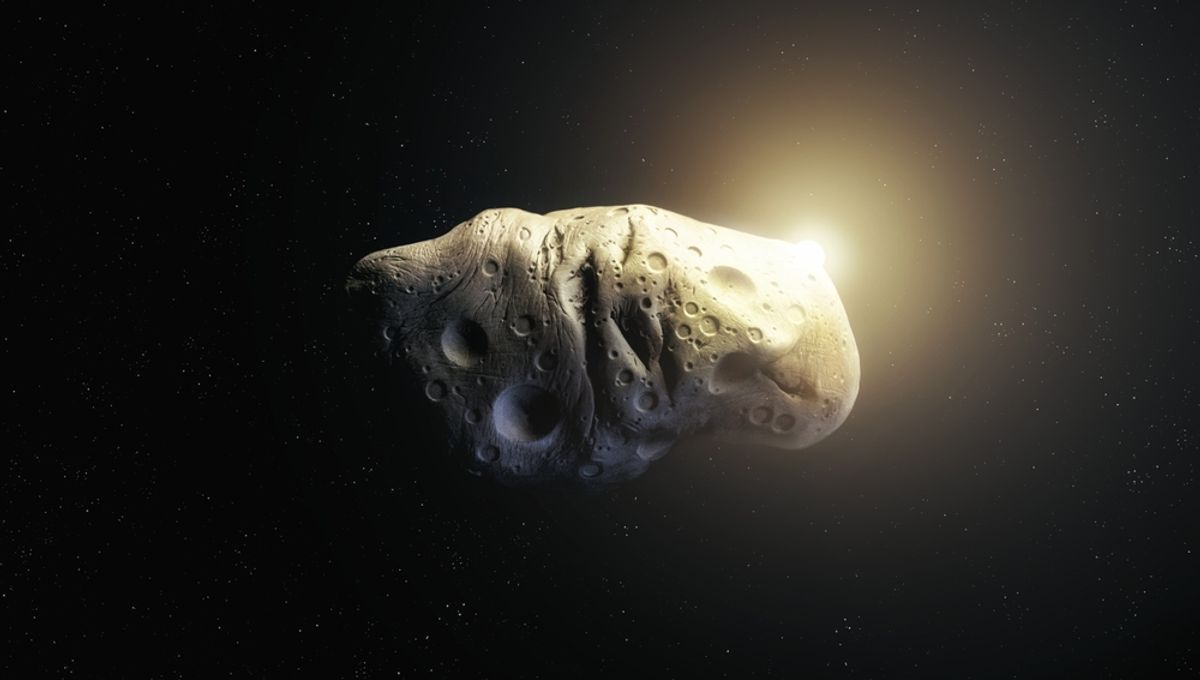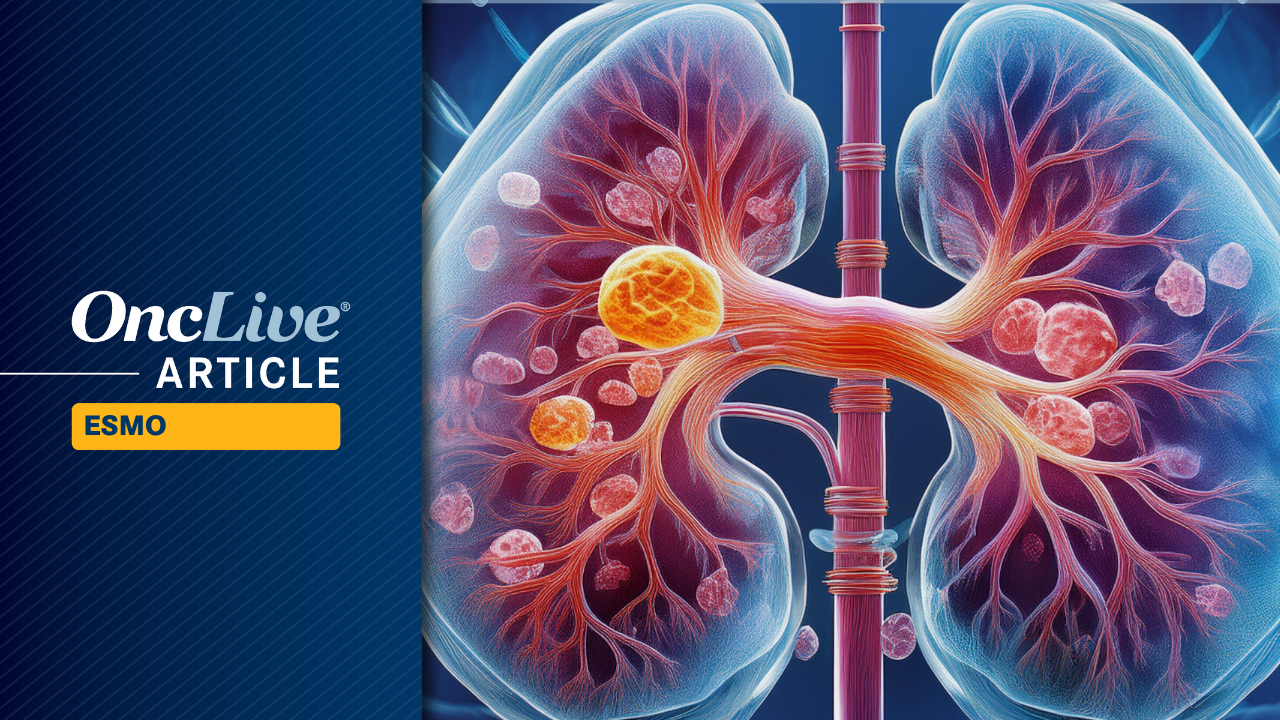The Arctic Ocean was once an important source of greenhouse gases to the atmosphere — and it could become one again, researchers warn.
Methane (CH4) is second only to carbon dioxide (CO2) in trapping heat in Earth’s atmosphere. Since 2020,…

The Arctic Ocean was once an important source of greenhouse gases to the atmosphere — and it could become one again, researchers warn.
Methane (CH4) is second only to carbon dioxide (CO2) in trapping heat in Earth’s atmosphere. Since 2020,…


By Christine Ji and Philip van Doorn
At a time where some companies are seeing declining free cash flow due to AI spending, these five tech stocks are doing the opposite
Investors looking to hedge against an AI downturn should consider looking at a company’s free cash flow yield.
Announcements of deals with OpenAI have sent shares of chip makers Advanced Micro Devices Inc. (AMD) and Broadcom Inc. (AVGO) soaring, while nuclear-energy stock Oklo Inc. (OKLO) has rallied almost 1,000% in the last year – despite having no revenues – on hopes that nuclear power will help meet the energy needs of artificial-intelligence infrastructure.
In a market trading on future potential instead of current fundamentals, many investors are wondering if the AI trade is overheating. And if AI is indeed becoming a bubble, what can you do to protect your portfolio?
There are still ways to play the AI trade in a less speculative way by focusing on a company’s fundamentals. Ted Mortonson, managing director at Baird, has his eyes on one metric: free cash flow, or the money left over after a company spends on its operations and capital assets.
A company’s free-cash-flow yield – or how much free cash flow it generates divided by its total market capitalization – gives investors a way to compare how much cash is returned for every dollar invested in the stock. While massive AI capital expenditures are seeing free cash flows at Big Tech companies trend downward or turn negative, other areas of the market are seeing the opposite effect.
If demand for AI products fails to live up to current expectations, it’ll be hard to avoid a widespread stock-market decline. Market concentration among the “Magnificent Seven” megacap tech stocks has reached record levels, and the AI theme has boosted valuations across all parts of the economy.
Yet companies with growing free cash flows will be better positioned to weather a potential downturn than those without.
Screening for tech stocks with high free-cash-flow yields
To begin this screen, we started with the 70 components of the S&P 500’s SPX information-technology sector XX:SP500.45. What might surprise you about this sector is that it excludes some of the largest tech-oriented companies such as Meta Platforms Inc. (META) and Alphabet Inc. (GOOGL) (GOOG), both of which are in the communications-services sector XX:SP500.50.
To bring those companies in, we added the 45 components of the Nasdaq-100 Technology Sector index XX:NDXT (a subset of the Nasdaq-100 index NDX) to our initial list. After removing duplicates, this left us with 82 stocks.
We screened for estimated free-cash-flow yields based on current share prices and consensus 2026 estimates for free cash flow per share among analysts polled by LSEG. The estimates are adjusted for the calendar year for companies whose fiscal reporting periods don’t match the calendar. Since consensus 2026 FCF estimates weren’t available for 10 of the companies, we were left with 72 stocks.
Some of these companies pay dividends – and since no management team wants to lower dividend payouts because of the dire effect that doing so can have on a stock’s price, we subtracted the dividend yields from the expected FCF yields for estimated 2026 FCF “headroom.” The idea is that the headroom is cash that the companies are free to use to fund expansion, raise dividends, buy back shares or for other corporate purposes that would hopefully benefit shareholders.
Here are the 20 stocks passing the screen with the highest expected 2026 free-cash-flow headroom:
Name Ticker Forward P/E Estimated 2026 FCF headroom Estimated 2026 FCF yield Dividend yield
PDD Holdings Inc. PDD 11.4 12.59% 12.59% 0.00%
GoDaddy Inc. GDDY 18.4 9.78% 9.78% 0.00%
Akamai Technologies Inc. AKAM 10.4 8.48% 8.48% 0.00%
ON Semiconductor Corp. ON 18.9 8.02% 8.02% 0.00%
Adobe Inc. ADBE 14.1 7.74% 7.74% 0.00%
Cognizant Technology Solutions Corp. CTSH 12.0 6.83% 8.72% 1.89%
Gartner Inc. IT 18.2 6.82% 6.82% 0.00%
First Solar Inc. FSLR 11.0 6.68% 6.68% 0.00%
Dell Technologies Inc. DELL 14.0 6.60% 7.99% 1.39%
GlobalFoundries Inc. GFS 18.2 6.55% 6.55% 0.00%
Gen Digital Inc. GEN 9.7 6.55% 8.44% 1.89%
Zebra Technologies Corp. ZBRA 16.8 6.06% 6.06% 0.00%
Salesforce Inc. CRM 19.7 5.90% 6.58% 0.68%
Qualcomm Inc. QCOM 13.6 5.86% 8.03% 2.17%
F5 Inc. FFIV 17.9 5.84% 5.84% 0.00%
Skyworks Solutions Inc. SWKS 17.4 5.83% 9.64% 3.81%
Western Digital Corp. WDC 17.3 5.32% 5.64% 0.32%
NetApp Inc. NTAP 14.7 5.50% 7.24% 1.74%
Workday Inc. WDAY 22.3 5.20% 5.20% 0.00%
Atlassian Corp. TEAM 31.9 4.87% 4.87% 0.00%
Source: LSEG
(You might need to scroll the table to see all of the data, or flip to a landscape view, depending on which device you are using. Click on the tickers for more information about each stock.)
Read: Tomi Kilgore’s detailed guide to the information available on the MarketWatch quote page
The table includes forward price-to-earnings ratios, which are current stock prices divided by consensus earnings-per-share estimates among analysts polled by FactSet. Most of the stocks among these 20 trade at low valuations compared with forward P/E ratios of 30.5 for the S&P 500 information-technology sector, 27.9 for the Nasdaq-100 and 23 for the full S&P 500.
Out of these 20 names, analysts are especially bullish on five, in particular: Qualcomm Inc. (QCOM), Western Digital Corp. (WDC), Dell Technologies Inc. (DELL), Atlassian Corp. (TEAM) and Salesforce Inc. (CRM)
Several of these names are hardware companies that have benefited greatly from selling the picks and shovels of the AI trade. Storage and memory businesses such as Qualcomm and Western Digital have seen demand for their products shoot up. Western Digital is one of the largest players in enterprise hard disk drives and is gaining pricing power amid this backdrop, Travis Prentice, chief investment officer of the Informed Momentum Company, recently told MarketWatch. As a result, Western Digital’s free-cash-flow yield inflected positive at the end of 2024 and has increased ever since.
Mortonson likes Qualcomm because of its “fabless” business model, which means that it designs its own chips but outsources the manufacturing. “Semiconductor companies that do not own their fabs produce an enormous amount of free cash flow,” Mortonson told MarketWatch. Additionally, Qualcomm’s products will be critical to powering AI devices at the “edge,” such as next-generation wearables, he added.
Dell is another attractive opportunity for investors looking for free cash flow. Bank of America analyst Wamsi Mohan wrote in a note last month that Dell should be able to grow its free cash flow “meaningfully” as it increases profitability on the AI servers it sells and expands its storage business.
Outside of AI hardware, the software sector also presents opportunities for robust free cash flows. Atlassian, which specializes in collaboration tools for developers, is one example. Miller Jump, vice president of equity research at Truist Securities, anticipates that Atlassian will be able to grow its free cash flow at 13.7% annually.
And Salesforce is another pick for Mortonson and BofA analyst Brad Sills. Although the stock has sold off 26% this year on fears of slow AI adoption, the company showed rising momentum with its Agentforce offering at its recent investor day. Salesforce also announced plans to repurchase $7 billion in shares over the next six months. In a note on Thursday, Sills raised the company’s free-cash-flow targets for the 2026 and 2027 fiscal years to $16.2 billion and $18.5 billion – a 2.5% and 3.7% increase, respectively.
Read: Think AI is a bubble? Here’s how to position your stock portfolio.
-Christine Ji -Philip van Doorn
This content was created by MarketWatch, which is operated by Dow Jones & Co. MarketWatch is published independently from Dow Jones Newswires and The Wall Street Journal.
(END) Dow Jones Newswires
10-18-25 0800ET
Copyright (c) 2025 Dow Jones & Company, Inc.

Reasonable people from all sides of the current AI conversation agree that this particular paradigm shift is just different. If you don’t believe that, record 20 minutes of your own stream of consciousness with an application like Otter and ask…

Game of Thrones was a cultural phenomenon in its prime, and it still seems to generate plenty of interest. That’s why, six years after the show ended, Chinese phone-maker Realme has collaborated with Warner Bros. Discovery to give us a phone that…

Google introduces new Gmail account recovery mode.
SOPA Images/LightRocket via Getty Images
Updated October 18 with a warning from Check Point Software security experts regarding the potential dangers of the latest Gmail recovery contacts…

An animation of an asteroid’s close approach to Earth has garnered considerable interest in recent times, largely due to its apparent proximity to our planet.
The rest of this article is behind a paywall. Please sign in or subscribe to access…

Ethan Hawke and Richard Linklater have one of the all-time greatest partnerships between an actor and a filmmaker in cinematic history. After meeting in the early 1990s in New York City, where Linklater saw Hawke in a play that co-starred their…

RNA sequencing (RNAseq)-defined clusters could effectively be used to select treatment for patients with metastatic clear cell renal cell carcinoma (ccRCC), according to data from the prospective phase 2 OPTIC RCC trial (OPtimal Treatment by Invoking biologic Clusters in Renal Cell Carcinoma) trial (NCT05361720) presented at the
The OPTIC trial sought to validate RNAseq-based clusters that were defined using a machine learning model from data collected in the IMmotion 151 trial (NCT0242082).2 In the trial, those with cluster 1/2, indicating an angiogenic tumor, were treated with cabozantinib (Cabometyx) plus nivolumab (Opdivo) and demonstrated deepened clinical outcomes.
“Selection of patients exhibiting an angiogenic gene expression signature enriches for clinical outcomes to cabozantinib plus nivolumab, including high objective response rate, reduction of tumor burden for all patients, and lack of progressive disease,” Scott, M. Haake, MD, PhD, assistant professor of medicine, Division of Hematology & Oncology at Vanderbilt School of Medicine, said during a presentation of the data.
The study met its primary end point with an objective response rate (ORR) of 76% among patients with cluster 1/2 tumors treated with cabozantinib plus nivolumab. Responses included 2 patients with a complete response (8%), 17 with partial responses (68%), 6 with stable disease (24%), and no patients with progressive disease.
“Of the 6 patients with stable disease, 3 just missed the criteria for objective response, but are very close at 27%, 27%, and 29%,” Haake noted. By RECIST criteria, a partial response is defined as a reduction of 30% or more.
In addition, 100% of tumors demonstrated tumor burden reduction, with a median reduction of 42% (range, 5%-100%).
Median follow-up was 11.1 months (range, 0.9-31.5), and as of the presentation, 17 of 27 patients remained on the study.
Further, the investigators compared gene expression patterns for tumors with the most vs the least tumor shrinkage. Preliminary results demonstrated distinct gene expression patterns in tumors with the most tumor shrinkage, Haake said. “When we look at pathways that include these differentially expressed genes, we see several metabolic pathways are enriched in tumors with the most tumor shrinkage, an increased epithelial transition expression, correlating with decreased tumor shrinkage.”
He noted that time-to-event end points such as PFS and duration of response will require additional follow-up.
In the trial, patients were selected for treatment based on their RNA sequencing-defined cluster. Those with cluster 1/2, defined as angiogenic, received nivolumab/cabozantinib whereas those with cluster 4/5, defined as inflamed, would receive ipilimumab (Yervoy)/nivolumab. “[This allows] us to test the hypothesis that angiogenic tumors can enrich the response to a regimen which contains an anti-angiogenic therapy,” Haake said.
The cluster 4/5 portion of the study remained open for accrual, and findings were not presented for this group. Those with cluster 3/6/7 were excluded from the trial.
Patients were eligible for the OPTIC RCC trial if they had an ECOG performance score (PS) of 0 or 1, metastatic ccRCC without prior systemic therapy in any setting, and available tissue for RNA sequencing or cluster prediction.
ORR served as the primary end point, while secondary end points included progression-free survival (PFS), a depth of response of 80% or more at 6 months, and immune-related adverse events.
Of the 27 patients included in the analysis, patients were a median age of 68 years (range, 52-86), and the majority were male (56%), White (89%), and had an ECOG PS of 0 (70%). Of note, 41% of patients were in the favorable-risk IMDC prognostic group.
There were no patients with sarcomatoid histology, and the sites for metastasis were typical of advanced kidney cancer. “However, we should point out that there was a higher proportion of pancreatic adrenal metastases relative to other frontline studies,” Haake added.
In terms of operational logistics, the investigators improved their speed over the course of the study, optimizing the turnaround for sequencing and data analysis with a consent to cluster assignment from 40 days to 20 days. “The rate-limiting step was typically acquisition of tissue, especially when biopsies or surgical samples were obtained at outside facilities that needed to be shipped to Vanderbilt before submission,” Haake explained.
According to Haake, the origins of the OPTIC RCC trial started with groups of clusters defined in the randomized phase 3 IMotion 151 trial which was designed to evaluate atezolizumab plus bevacizumab vs sunitinib in patients with kidney cancer who were not previously treated.
Of the 7 clusters discovered, grouping similar tumors, cluster 1/2 exhibited a strong angiogenic gene expression signature. “Patients in these 2 clusters had favorable PFS to both the control arm and the experimental arm, possibly because both arms contain the potent anti-angiogenic therapy,” he added.
Meanwhile, cluster 4/5 demonstrated a superior response to the immune checkpoint inhibitor-containing experimental arm.
“[Therefore], the goal [of the OPTIC RCC trial] was to take these tumor clusters or gene expression signatures that retrospectively correlated with drug response and prospectively evaluate their ability to enrich for drug response,” Haake explained. “…We can do this study. We can biopsy metastatic tumors. We can isolate their mRNA, sequence them, assign them clusters and treat them according to those cluster assignments, all within the context of an interventional clinical trial.”
We recently published a photo essay that captured people reading books around the D.C. area. We asked them where they got the books, what they thought of them and why they liked them. The feedback on that article has been tremendous, and another…